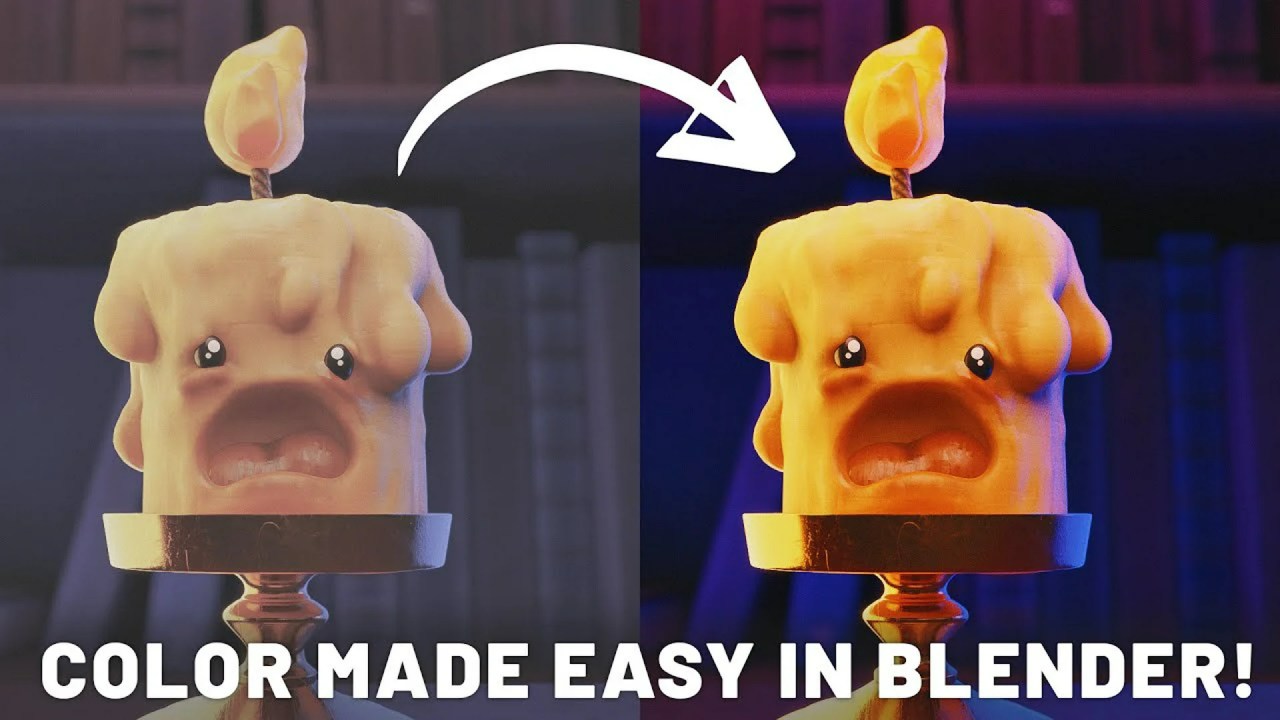The Blender Conference 2025 keynote revealed a future of innovation with Blender 5.0’s Physics Nodes and tablet support. It also marked a pivotal leadership transition, as Ton Roosendaal passed the torch to Francesco Siddi, heralding a new era for the open-source creative platform.
For 3D artists and creative professionals, the annual Blender Conference is a highlight, offering a glimpse into the future of this powerhouse open-source software. The 2025 keynote, delivered by the visionary founder Ton Roosendaal and incoming CEO Francesco Siddi, was no exception. It provided a comprehensive look back at a year of remarkable achievements and offered an exciting peek into the ambitious plans for Blender’s evolution, particularly with the highly anticipated Blender 5.0.
It’s always fascinating to observe how Blender, unlike many commercial software giants, thrives on community collaboration and transparent development. This unique model has allowed it to consistently push boundaries and remain at the forefront of 3D creation, directly influenced by its passionate user base. This year’s keynote truly underscored the strength of this approach, showcasing both technological leaps and the enduring spirit of its global community.
Blender 5.0: A Glimpse into the Future of Creation
Looking ahead to Blender 5.0, the keynote highlighted several groundbreaking developments set to redefine the user experience. One of the most anticipated features is Physics Nodes, which promises to transform Blender into a real-time physical environment. This advancement will empower creators with interactive animation and tools, moving closer to a true “real-time mode” for dynamic content creation. Imagine the possibilities for interactive scenes and responsive Physics.
Another exciting innovation is the Story Tool. This integrated feature will combine Grease Pencil, video sequencing, and drawing capabilities, enabling artists to craft entire movies directly within Blender. From initial storyboarding to final editing, the Story Tool aims to streamline the narrative creation process, making Blender an even more comprehensive platform for filmmakers and animators.
Furthermore, the team announced that Blender is set to become fully usable on tablets, including iPad and Android devices. Thanks to architectural readiness and strategic partnerships with industry leaders like Apple and Wacom, this initiative focuses on practical usability, extending Blender’s reach to mobile creative workflows. This move opens up incredible opportunities for artists on the go, making these updates truly impactful.
Community Triumphs and Project Foundations
The past year was also rich with community achievements. Daniel Lyra’s “Clay Pencil” stood out as a compelling example of innovation, allowing users to draw in the viewport and instantly create 3D models. This showcases the immense potential of tablet-based workflows for 2D animators transitioning into 3D. Moreover, Gints and his team’s Oscar win for “Flow” significantly amplified Blender’s visibility in Hollywood, a testament to the software’s growing prestige. Financially, the project concluded the previous year strongly, with an unprecedented increase in individual recurrent donations, signaling explosive growth in community support.
Roosendaal then delved into the core elements contributing to Blender’s enduring success. He passionately emphasized that the community — comprising millions of users, dedicated contributors, and world-class developers — is its greatest asset. The Blender GPL license, initially met with skepticism, has proven instrumental in keeping the software free and unified, fostering a collaborative ecosystem rather than succumbing to corporate control. He highlighted Blender’s nature as a public project, with all development transparently conducted on Blender.org, and a high percentage of employees originating from its contributor base.
A New Era: Leadership Transition and Future Vision
In a significant announcement, Roosendaal shared his decision to step down as Blender Foundation Chairman and Blender CEO by the end of the year. He introduced the new management team: Fiona Cohen (Head of Operations), Dalai Felinto (Head of Product), Sergey Shubin (Head of Development), and Francesco Siddi (CEO). This team, embodying the qualities of organizer, designer, developer, and entrepreneur, will officially take the helm in 2026. Roosendaal expressed full confidence in this new generation, citing their combined 40 years of Blender experience and deep understanding of the project’s principles. He will transition to a supervisory board role, seeking personal freedom while always carrying Blender in his heart.
Siddi then took the stage, sharing his journey from an open-source activist in 2004 to his instrumental role in projects like “Elephant’s Dream” and “Tears of Steel.” He was crucial in establishing Blender Studio and its ambitious open movies. His vision for Blender’s future aligns closely with Roosendaal’s: a focus on design for useful and usable tools, open and accessible technology, and uniting communities. He stressed the continued importance of storytelling, ambitious challenges, and ensuring the project’s continuity and stability.
The incoming CEO also outlined goals for fostering a more diverse community and securing robust funding for innovation and disruptive R&D. This proactive approach aims to prevent conservative development as Blender scales, upholding its core purpose: empowering small teams and individuals with the freedom to create. Siddi acknowledged the need to adapt to the project’s increasing scale while fiercely maintaining Blender’s independence and strength, ensuring its Open Source Development continues to thrive.
Looking Forward with Confidence
The Blender Conference 2025 keynote painted a vibrant picture of a project that is not only innovating technologically but also thoughtfully evolving its leadership and strategic direction. With Blender 5.0 on the horizon and a passionate new team at the helm, the future for 3D artists and creative professionals using Blender looks brighter than ever. The commitment to its open-source roots, combined with a forward-thinking future vision, ensures Blender will continue to be a powerful and accessible platform for creativity worldwide. We eagerly anticipate the unfolding of this exciting new chapter.



